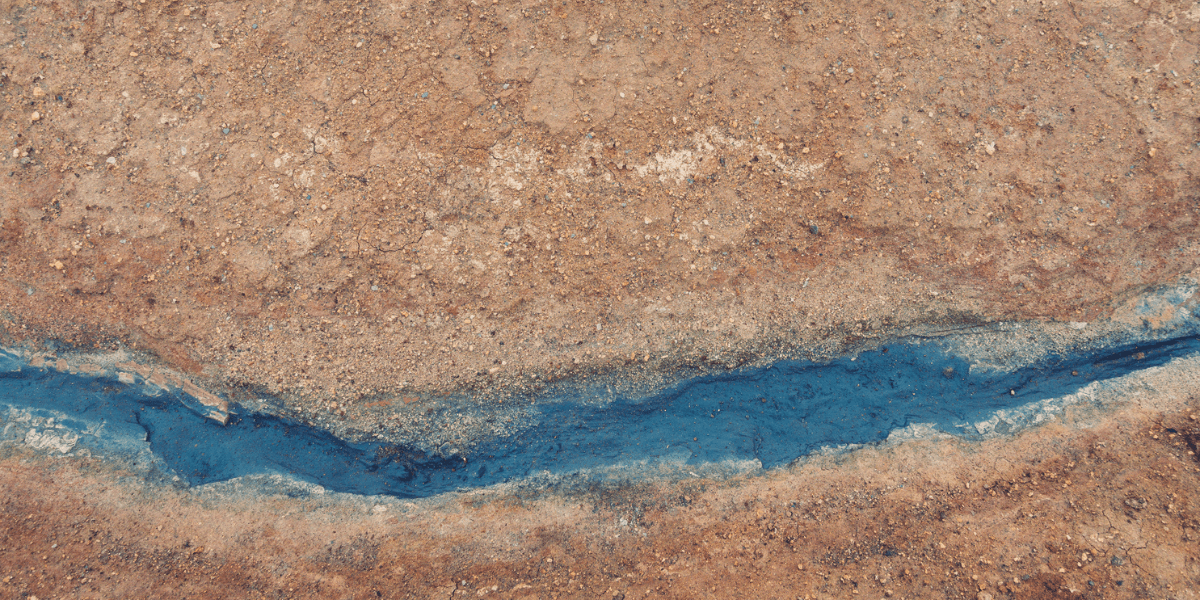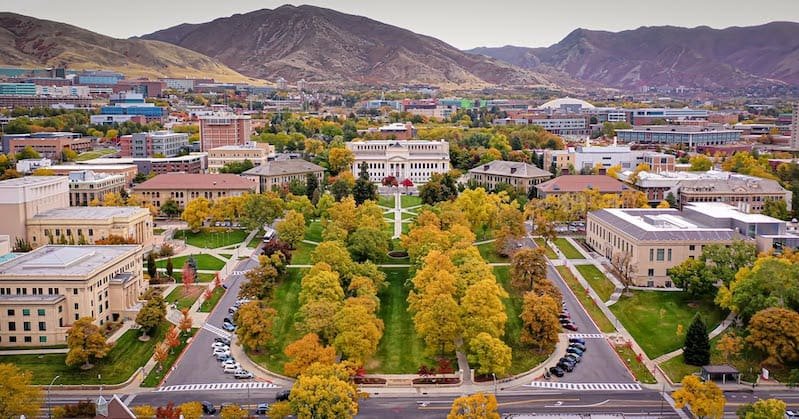AI Research
AI Unlocks Earth’s Subsurface Mysteries for Smart Energy Applications – USC Viterbi

The Hverir area in Iceland, known for its geothermal landscapes, is a key example of subsurface energy systems that AI research aims to improve, including geothermal energy and CO₂ storage. Photo/iStock.
Environmental scientists have amassed reams of data about the Earth’s surface and the vastness of its atmosphere.
As for the subterranean world?
Not nearly as much.
A new research project co-led by USC Viterbi’s Thomas Lord Department of Computer Science Professor Yan Liu aims to better understand and predict how water, carbon dioxide (CO₂), and energy move underground, which is critical for safe CO₂ storage, water management, and improving sustainable energy recovery.

PI Yan Liu and co-PI Behnam Jafarpour.
For instance, the results of the study could help scientists tackle such critical challenges as the safe underground storage of CO₂, a chemical compound that drives shifts in Earth’s energy balance.
CO₂ storage, also known as carbon capture and storage (CCS), is a process whereby carbon dioxide (CO₂) emissions from industrial sources or power plants are captured before they enter the atmosphere and then stored underground in geological formations, like depleted oil and gas fields or deep saline aquifers.
“CO₂ capture and storage is one of the grand challenges in geoscience, and our work has the potential to offer major breakthrough solutions to the accurate prediction of CO₂ storage,” said Liu, principal investigator of the study.
“Our work has the potential to offer major breakthrough solutions to the accurate prediction of CO₂ storage.” Yan Liu.
The research project also could aid in groundwater management and geothermal energy recovery, among other applications, added Liu, also a professor of electrical and computer engineering and biomedical sciences.
For example, she said, geoscientists would be able to better identify suitable storage reservoirs, predict their responses to development and operation strategies, and characterize important rock flow and transport properties.
Leveraging strengths
Liu is teaming up on the study with co-principal investigator Behnam Jafarpour, professor of chemical engineering and material science, electrical and computer engineering, and civil and environmental engineering.
The research project will employ a machine learning tool to solve some of the mysteries occurring below ground.
The three-year study, “Advancing Subsurface Flow and Transport Modeling with Physics-Informed Causal Deep Learning Models,” is supported by the U.S. National Science Foundation as part of its Collaborations in Artificial Intelligence and Geosciences (CAIG) program.
“Collaboration between geoscientists and computer scientists is essential.” Behnam Jafarpour
“Collaboration between geoscientists and computer scientists is essential for advancing subsurface flow and transport modeling by harnessing recent breakthroughs in AI and machine learning,” Jafarpour said. “The key lies in seamlessly integrating reliable domain knowledge and physical principles with AI algorithms to develop innovative technologies that leverage the strengths of both fields.”
A ‘paradigm shift’
Rocks, fractures, and fluids interact in a complex way below Earth’s surface, making it difficult to predict their behavior.
In particular, rock deposits form intricate structures and layers often exhibit complex fluid flow patterns in subsurface environments. Predicting the dynamics of the emerging flow patterns in complex geologic formations is paramount for managing the development of underlying resources.
By combining physical science and data that will be generated by an AI deep-learning model called PINCER (Physics-Informed Causal Deep Learning Models), Liu and Jafarpour hope to create a way to better capture and predict subsurface flow and transport dynamics.
The study launched in mid-September 2024 and is estimated to last through Aug. 31, 2027.
“PINCER presents a paradigm shift from traditional data-driven approaches or model-based techniques to a hybrid solution that combines the benefits of both methods,” an abstract of the study explains. “(It) advances geoscience research by developing more efficient and robust modeling and prediction of fluid flow and transport processes in subsurface environments.”
A clearer picture
As Liu explained, simulation systems have been used for decades to predict the subsurface flow dynamics, “but these models have their limitations,” she said. She explained that they rely heavily on highly uncertain inputs and are based on simplified descriptions of the underlying physics.
The new AI tool will build up the dataset from what is now a small amount of data, she said.
With a clearer picture of the underground dynamics, identifying suitable sites for underground CO₂ storage, for example, will become less of a guessing game, thus reducing the risk of accidental leaks due to unanticipated movements of subterranean materials.
Standard AI tools rely heavily on large training datasets and may produce predictions that deviate from the governing principles of subsurface flow systems, according to Jafarpour.
“The hope is that customized solutions like PINCER can help mitigate these limitations by enhancing physical consistency and reducing the data requirements of AI models,” he said.
AI techniques in geosciences
Two other USC studies were funded in the NSF grant package, one involving paleoclimatology and the other earthquake dynamics.
The NSF aims to advance the development and implementation of innovative AI techniques in geosciences to help better understand extreme weather, solar activity, earthquake hazards, and more.
The CAIG grants, announced in August 2024, require the collaboration of geoscientists, computer scientists, mathematicians, and others.
Liu and Jafarpour had received seed funding from the USC Ershaghi Center for Energy Transition to start their collaboration in this important area.
Published on July 9th, 2025
Last updated on July 9th, 2025
AI Research
University Of Utah Teams With HPE, NVIDIA To Boost AI Research

The University of Utah (the U) is planning to join forces with two powerhouse tech firms to accelerate research and discovery using artificial intelligence (AI). The agreement with Hewlett Packard Enterprise (HPE) and AI chipmaker NVIDIA will amplify the U’s capacity for understanding cancer, Alzheimer’s disease, mental health, and genetics. The initiative is projected to enable medical breakthroughs, driving innovation, and scientific discovery across disciplines.
“The U has a proud legacy of pioneering technological breakthroughs,” said Taylor Randall, president of the University of Utah. “Our goal is to make the state awash in computing power by building a robust AI ecosystem benefiting our entire system of higher education, driving research to find new cures, and igniting Utah’s entrepreneurial spirit.”
The partnership, which includes a $50 million investment of funds from both public and philanthropic sources, is projected to increase the U’s computing capacity 3.5-fold. The flagship school’s Board of Trustees gave preliminary approval to the proposed arrangement on September 9.
The structure paves a path for substantial advances in computing storage and infrastructure required for Utah-based projects in AI and innovation. The goal is to lay the foundation for a scalable AI ecosystem available to researchers, learners, and entrepreneurs across Utah. The multi-year initiative would build upon existing capabilities in AI, giving the U access to substantially more computing power.
Brynn and Peter Huntsman along with the Huntsman Family Foundation will provide a lead philanthropic gift to the U that is intended to initiate the project and help encourage other supporters to make investments required to move the work forward through AI “supercomputer” systems designed to handle enormous processing and storage needs. The university will seek remaining funds from the state of Utah and other sources.
“This AI initiative will accelerate world class cancer research that enhances capabilities in ways we hardly imagined just a few years ago,” said Peter Huntsman, CEO and chairman, Huntsman Cancer Foundation. “Huntsman Cancer Foundation recently announced our commitment to support the expansion of the educational, research, and clinical care capacity of the world renown Huntsman Cancer Institute in Vineyard, Utah, which will serve as a hub for cancer AI research. These investments will speed discoveries and enhance the state of Utah’s leadership in AI education and economic opportunity.”
Mental health will be a major focus of the AI research endeavor.
“As the Huntsman Mental Health Institute opens its new 185,000-square-foot Translational Research Building this coming year, we’re looking forward to increasing momentum around mental health research, including the impact of this technology,” said Christena Huntsman Durham, Huntsman Mental Health Foundation CEO and co-chair. “We know so many people are struggling with mental health challenges; we’re thrilled we will be able to move even faster to get help to those who need it most.”
Check out all the latest news related to Utah economic development, corporate relocation, corporate expansion and site selection.
AI Research
F5 to acquire AI security firm CalypsoAI for $180 million

F5, a Seattle-based application delivery and security company, announced Thursday it will acquire Dublin-based CalypsoAI for $180 million in cash, highlighting the mounting security challenges enterprises face as they rapidly integrate artificial intelligence into their operations.
The acquisition comes as companies across industries rush to deploy generative AI systems while grappling with new categories of cybersecurity threats that traditional security tools struggle to address. CalypsoAI, founded in 2018, specializes in protecting AI systems against emerging attack methods, including prompt injection and jailbreak attacks.
“AI is redefining enterprise architecture and the attack surface companies must defend,” said François Locoh-Donou, F5’s president and CEO. The company plans to integrate CalypsoAI’s capabilities into its Application Delivery and Security Platform to create what it describes as a comprehensive AI security solution.
Companies are embedding AI into products and operations at an unprecedented pace, but this rapid adoption has created compliance gaps and heightened regulatory scrutiny. CalypsoAI addresses these challenges through what the company calls “model-agnostic” security, providing protection regardless of which AI models or cloud providers enterprises use.
The platform conducts automated red-team testing against thousands of attack scenarios monthly, generating risk assessments and implementing real-time guardrails to prevent data leakage and policy violations.
“Enterprises want to move fast with AI while reducing the risk of data leaks, unsafe outputs, or compliance failures,” said CalypsoAI CEO Donnchadh Casey. The company’s approach focuses on the inference layer where AI models process requests, rather than securing the models themselves.
The acquisition comes during a flurry of similar moves by established companies in the cybersecurity space that are looking to add AI-powered offerings to their customers.
F5 has also been active this year with what it considers strategic purchases. The company acquired San Francisco-based Fletch in June and observability firm MantisNet in August, demonstrating a pattern of building capabilities through acquisition rather than internal development.
The deal is expected to close by Sept. 30.
AI Research
Nebius Raises $3.7 Billion in Wake of Microsoft AI Deal

Dutch cloud computing company Nebius has raised $3.75 million via sales of stock and convertible notes.
-

 Business2 weeks ago
Business2 weeks agoThe Guardian view on Trump and the Fed: independence is no substitute for accountability | Editorial
-
Tools & Platforms1 month ago
Building Trust in Military AI Starts with Opening the Black Box – War on the Rocks
-

 Ethics & Policy2 months ago
Ethics & Policy2 months agoSDAIA Supports Saudi Arabia’s Leadership in Shaping Global AI Ethics, Policy, and Research – وكالة الأنباء السعودية
-

 Events & Conferences4 months ago
Events & Conferences4 months agoJourney to 1000 models: Scaling Instagram’s recommendation system
-

 Jobs & Careers2 months ago
Jobs & Careers2 months agoMumbai-based Perplexity Alternative Has 60k+ Users Without Funding
-

 Podcasts & Talks2 months ago
Podcasts & Talks2 months agoHappy 4th of July! 🎆 Made with Veo 3 in Gemini
-

 Education2 months ago
Education2 months agoMacron says UK and France have duty to tackle illegal migration ‘with humanity, solidarity and firmness’ – UK politics live | Politics
-

 Education2 months ago
Education2 months agoVEX Robotics launches AI-powered classroom robotics system
-

 Funding & Business2 months ago
Funding & Business2 months agoKayak and Expedia race to build AI travel agents that turn social posts into itineraries
-

 Podcasts & Talks2 months ago
Podcasts & Talks2 months agoOpenAI 🤝 @teamganassi

